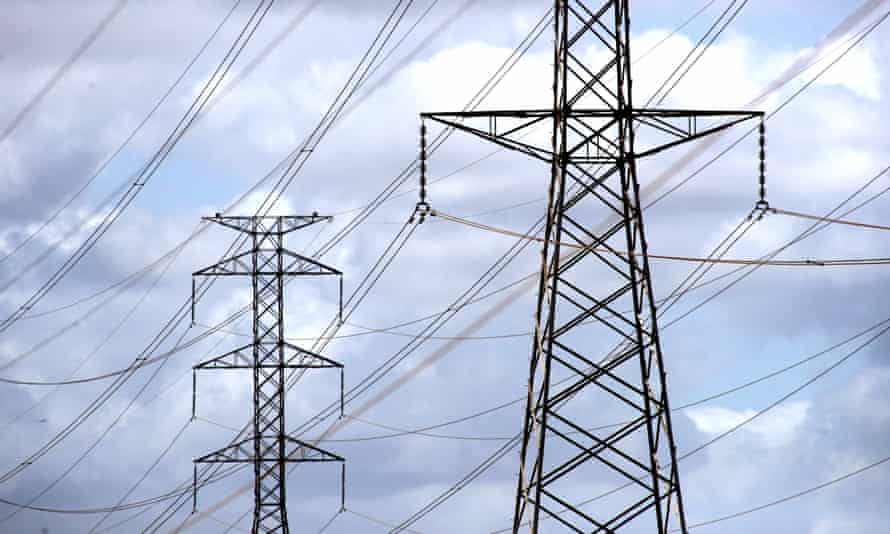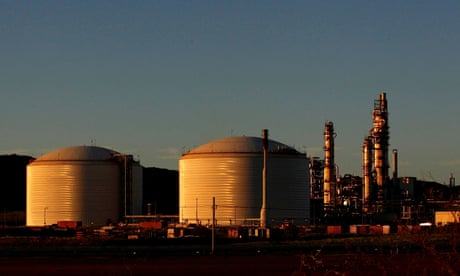Extract from The Guardian
Little demand is likely for the ‘peaking’ plant before 2030, calling into question the Coalition’s claim it will reduce electricity prices

Last modified on Thu 10 Jun 2021 04.04 AEST
A $600m gas power plant promised by the Morrison government is not needed and has no prospect of generating enough revenue to justify its cost, according to a new analysis.
A report by Victoria University’s energy policy centre suggested the case for the Hunter Valley plant, to be built by the publicly owned Snowy Hydro with taxpayers’ funds, failed on several grounds.
They included: New South Wales already had three “peaking” gas power plants and government advice had suggested there would be hardly any demand for the electricity they provided before 2030; the new plant was likely to cost at least 50% more to build than the $600m committed; and the proposed site at Kurri Kurri had a limited gas supply, raising questions about whether it would always be available or the plant would have to run on polluting diesel in the future.
The energy minister, Angus Taylor, has argued the plant is needed to avoid a significant increase in wholesale electricity prices when the Liddell coal-fired plant shuts in 2023.
They cited evidence from the Australian Energy Market Operator (Aemo) that there would not be a shortfall in dispatchable electricity – generation that can be turned on when required to support variable solar and wind – when Liddell closed.
Mountain said several further commitments, including for several large batteries, had been made since Aemo’s forecast, strengthening the case that there would be a surplus of supply in 2023. The report said there were five large-scale batteries in the national electricity grid, seven under construction and 18 nearing final commitment.
The report cited Aemo’s integrated system plan, which modelled a lowest-cost optimal grid for 2040. It said Aemo found dispatchable gas generation could be needed for as little as 13 hours a year by 2030 under the rapid shift to renewable energy now under way.
It concluded that there was “at best a tiny market for the sort of service that [the plant] can offer”. “It has no prospect of earning anywhere near the revenues needed to recover its outlay,” the report said.
Mountain said there was “no doubt” the Kurri Kurri plant would become a stranded asset. “It is the wrong thing at the wrong time. Gas is really past its prime,” he told Guardian Australia. “It will just do damage to the local environment and cost the taxpayer.”
Taylor’s office and Snowy Hydro declined to respond to the report.
The May announcement of the 660 megawatt Kurri Kurri plant followed Scott Morrison warning last September that taxpayers would step in if the private sector did not commit to building at least 1,000MW to replace Liddell.
EnergyAustralia had announced it would build a 316MW gas-hydrogen plant, and iron ore billionaire Andrew Forrest said he planned to build a 635MW gas-hydrogen plant through his private company, Squadron Energy.
Both received government grants – $78m from NSW and $5m from the commonwealth for EnergyAustralia, and $30m in the recent federal budget for Squadron Energy – but, with Forrest’s proposal yet to reach approval stage, Taylor said the 1,000MW the government had demanded had not been committed in time.
The minister said it was part of the government’s “gas-fired recovery” from the coronavirus and needed to avoid “unacceptable price increases” for families and businesses. Taylor’s spokesperson later said it was “exactly what is needed to keep our grid affordable and reliable” and the government could not “risk the future of important manufacturers and job creators” such as the Tomago aluminium smelter.
The funding was announced as the International Energy Agency said there should be no new investments in coal, oil or gas if the world was to live up to the goals of the Paris agreement.
Snowy Hydro executives told a recent Senate estimates hearing the Kurri Kurri plant was expected to run at the equivalent of between 2% and 5% of its capacity each year, which is normal for a “peaking” plant that usually only enters the market when required.
Energy market experts have questioned why Snowy Hydro needed a new gas plant when it already owned a large gas generator – the 667MW Colongra generator – that has run at less than 1% equivalent over the past year.
Colongra sat idle while Tomago shut down on three nights last month after major outages at several black coal plants triggered large spikes in the wholesale electricity price.
Based on evidence in an environmental impact statement lodged with the NSW government, the Victoria University centre report found Kurri Kurri would take 30 minutes to reach full capacity and was likely to be slower to respond than batteries when needed. It said this inflexibility would render the plant “useless in most circumstances” under upcoming changes to the electricity market.
Labor has demanded the government release the business case for the plant, noting many experts, including the head of the Energy Security Board, Kerry Schott, had argued it did not make commercial sense.


No comments:
Post a Comment